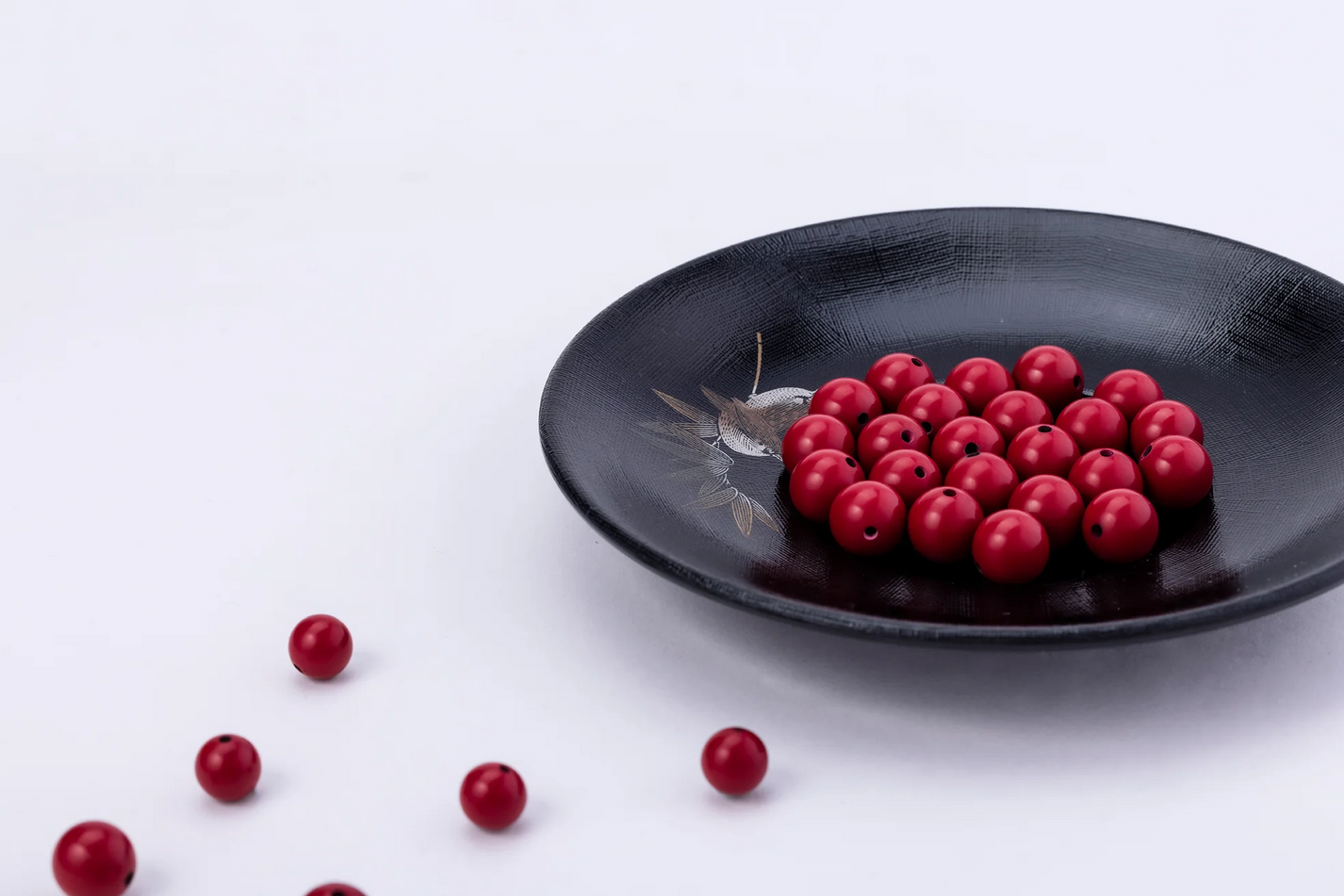
BIWAKO’s Design Philosophy
BIWAKO prides itself in honoring long-standing Japanese traditions including the celebration of nature. Our brand’s ethos is built upon environmental stewardship, craftsmanship and artistry, ethical treatment of the mussels we farm, quality over quantity, and utilizing sustainable and innovative farming practices—all of which influence our design philosophy and brand identity.
As a nod to our beliefs, each one of our modern heirloom jewelry designs has a red lacquered bead, known as an Ojime bead. These beads were once only worn by royals and symbolize Japan’s deeply rooted philosophy of making items that stand the test of time.
Lacquerware was introduced in Japan 2000 years ago (with its origins dating back 7000 when the first large, lacquered bowl was produced that still shines today as if it were new). Wooden items were carefully painted with numerous layers of raw lacquer made from the sap of sumac trees by highly skilled master craftsmen who learned their techniques from previous generations.
The sap would create a protective layer that makes the objects inherently stronger and gives them a subtle luster. This ancient practice has generated dozens of unique techniques that have become an art, culture, and attitude towards Japanese life.
Lake Biwa, the birthplace of freshwater pearl farming, , is also the original location where the sumac tree’s sap was obtained. Even today, residents still climb the mountains in summer and autumn, the same way as the ancients did thousands of years ago, and carefully cut the bark in order not to harm the tree. They wait for the sap to fall drop by drop and then collect the raw lacquer with the pearl shells from the lake creating a full circle moment with the use of the local natural resources.
In a modern world filled with noise and excess, BIWAKO incorporates lacquered Ojime beads to honor our Japanese heritage to create highly edited jewelry pieces that are both modern, yet timeless in quality and style—something that epitomizes our belief that possessing less is more.
Fewer, but better.

